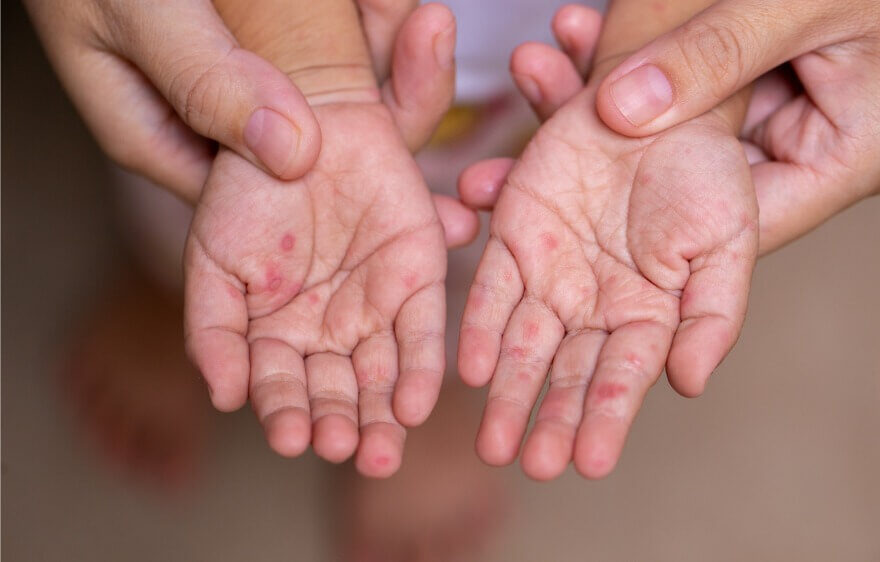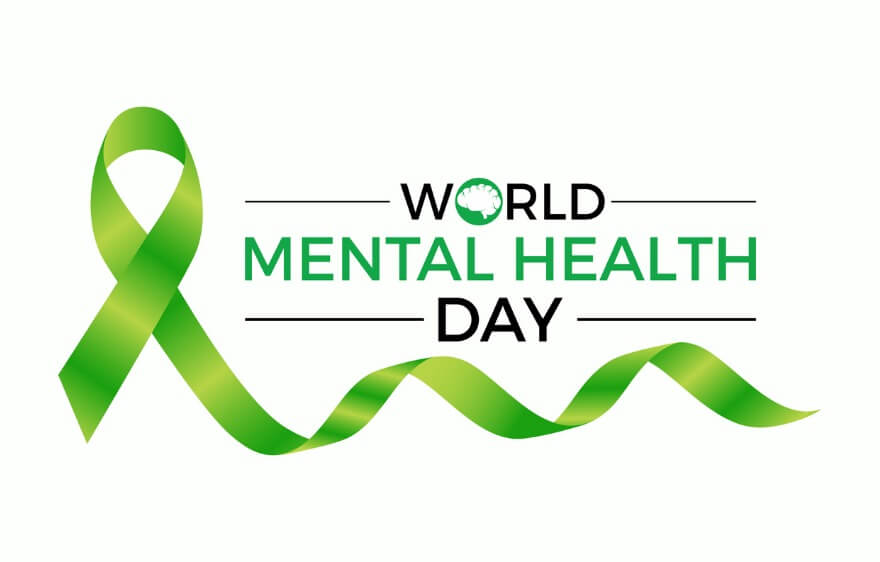Hand Foot and Mouth Disease (HFMD) is a common illness among young children. Known for causing fever, rashes, and painful mouth sores, HFMD can be especially concerning for parents of medically fragile or immunocompromised children, who may be more vulnerable to its effects. While HFMD is typically mild, understanding how to care for all children, especially those with higher health risks, is essential.
This guide provides everything you need to know, from symptoms and prevention tips, to what to watch for in children with special health needs.
What is Hand Foot and Mouth Disease?
Hand Foot and Mouth Disease (HFMD) is a viral infection, most common in children under five, caused by various viruses in the enterovirus group, particularly the coxsackievirus A16. The illness spreads quickly in environments with close contact, like daycare centers and schools, and its hallmark symptoms include fever, rashes on the hands and feet, and small, painful sores in the mouth.
For most children, Hand Foot and Mouth Disease is mild, but medically fragile and immunocompromised children may be at risk of more severe complications. These children’s immune systems may struggle to fight off the virus effectively, making it essential to be proactive in prevention and early treatment.
Signs & Symptoms of HFMD
HFMD symptoms usually appear three to six days after exposure to the virus. Here’s what you can typically expect:
- Fever: Often the first sign, though it may vary in intensity.
- Sore Throat: Discomfort when swallowing is common, especially as sores develop in the mouth.
- Mouth Sores: Painful, red spots appear inside the mouth, on the tongue, and on the cheeks, making eating or drinking uncomfortable.
- Rash on Hands and Feet: Red spots or small blisters may appear on the palms, soles, and sometimes other areas like knees, elbows, or buttocks.
For medically fragile or immunocompromised children, these symptoms may become more severe and require closer monitoring. Dehydration is a particular risk due to difficulty eating or drinking from mouth sores.
Causes of HFMD
Hand Foot and Mouth Disease is caused by viruses in the enterovirus family, primarily coxsackievirus A16 and enterovirus 71. It spreads through contact with saliva, mucus, fluid from blisters, or stool of an infected person. HFMD is especially common in communal environments like schools and playgrounds.
Risk Factors
Certain factors increase a child’s risk of contracting HFMD, including:
- Age: Most cases occur in children under five, but older children and adults can also be affected.
- Environment: Daycares, schools, and other group settings can lead to outbreaks due to close contact.
- Immune System Health: Medically fragile or immunocompromised children may have an increased risk of severe symptoms.
Medically fragile children, such as those with underlying respiratory or cardiac conditions, and immunocompromised children, such as those undergoing chemotherapy, are particularly vulnerable. Their immune systems may be less equipped to fight the virus, increasing the risk of complications.
How Long Does Hand Foot and Mouth Disease Last?
For most children, HFMD lasts seven to 10 days from symptom onset to full recovery. Medically fragile or immunocompromised children may experience a longer illness duration, as their bodies take longer to fight the infection. Symptoms may improve after a few days, but more vulnerable children may need additional supportive care for a full recovery.
Can Adults Get Hand Foot and Mouth Disease?
Yes, adults can get Hand Foot and Mouth Disease, though it’s less common. In adults, the illness is often mild, with symptoms that may not appear at all. But even if they show no symptoms, adults can still spread the virus to children, including those who are medically fragile or immunocompromised.
Treatment for HFMD
There’s no specific cure for HFMD, but symptoms can be managed at home with comfort measures:
- Fever and Pain Relief: Acetaminophen or ibuprofen can help reduce fever and ease the pain from mouth sores. Avoid aspirin in children.
- Hydration: Encourage fluids to prevent dehydration, especially if mouth sores make eating difficult. Smoothies or ice pops can be soothing and hydrating.
- Soft Foods: Offer easy-to-eat foods like yogurt, mashed potatoes, or applesauce that won’t irritate mouth sores.
- Mouth Rinse: Older children can try a mild saltwater rinse for temporary mouth pain relief.
For medically fragile children, medical guidance is critical. Consult your child’s healthcare provider to ensure they’re receiving adequate support and hydration. In some cases, hospitalization may be necessary if complications arise.
Complications of HFMD
While HFMD is generally mild, medically fragile or immunocompromised children may face an increased risk of:
- Severe Dehydration: Due to difficulty drinking with mouth sores, dehydration can quickly become dangerous.
- Secondary Infections: Open sores may become infected, leading to bacterial infections requiring antibiotics.
- Viral Meningitis or Encephalitis: In very rare cases, HFMD can lead to viral meningitis or encephalitis, conditions that affect the brain and spinal cord, which can be severe in immunocompromised children.
If you notice signs of severe dehydration, unusual drowsiness, or any changes in alertness, contact your healthcare provider immediately.
When to See a Doctor
While HFMD is usually managed at home, you should seek medical advice if any of the following develop:
- High Fever: A fever persists for more than three days.
- Severe Dehydration: Signs include dry mouth, lack of tears, or infrequent urination.
- Breathing Difficulties: Or if there’s any sign of a severe headache.
- For Medically Fragile Children: Contact your provider at the first sign of symptoms for guidance.
Early intervention is especially important for immunocompromised or medically fragile children, as they may require additional care to prevent complications.
Prevention of HFMD
Preventing HFMD requires a combination of good hygiene practices. Here are some key steps:
- Handwashing: Encourage kids and caregivers to wash hands regularly, especially after using the restroom, changing diapers, or before eating.
- Avoid Sharing: Avoid sharing cups, utensils, and personal items.
- Clean Surfaces: Frequently disinfect commonly touched surfaces, toys, and play areas.
- Cough and Sneeze Etiquette: Teach children to cover coughs or sneezes with their elbows.
How Long is HFMD Contagious?
HFMD is most contagious during the first week of symptoms but can spread for weeks afterward. In medically fragile children, symptoms and contagiousness may last longer. Once the fever subsides and sores begin to heal, children can usually return to daycare or school, but it’s always best to check with your healthcare provider.
Caring for a Child with HFMD
Caring for any child with HFMD can be challenging, and it can require special consideration if children have medical vulnerabilities:
- Comfort and Calm: Symptoms like mouth sores and fever can be very uncomfortable. Provide extra cuddles and calm activities, like storytime or quiet games, to help them feel at ease.
- Keep Them Hydrated: Dehydration can quickly worsen HFMD symptoms. Offer frequent sips of water, ice pops, or electrolyte-rich drinks to keep your child hydrated.
- Follow Care Plans: If your child has an existing care plan, consult with their healthcare team to adjust their care as needed.
- Monitor Closely: Keep an eye on their symptoms, including fever, hydration levels, and any new signs of discomfort. Report changes to your pediatrician immediately, especially if there are concerns about their immune response.
Achieving Healthy Outcomes for HFMD
Hand Foot and Mouth Disease is common, and while it usually resolves on its own, it’s crucial to be proactive when caring for medically fragile or immunocompromised children. With close monitoring, plenty of rest, and adequate hydration, most children can recover without complications. But if you have any concerns, never hesitate to reach out to your healthcare provider for advice.
While it is usually a short-lived illness, HFMD can pose unique challenges for families, especially when a child has other medical conditions. Pediatric home health services can be an invaluable support for families dealing with HFMD, particularly if a child is medically fragile or immunocompromised.
Home health professionals can provide skilled care and guidance, help manage symptoms and prevent dehydration, monitor for potential complications, and support family caregivers in following the child’s care plan. For families of children with additional conditions, home health nurses can coordinate with doctors to ensure the child’s overall health needs are met, minimizing trips to the hospital and ensuring comfort at home. Having a trusted, skilled care provider can offer peace of mind to families and ensure children get the best care possible while recovering from HFMD.
Schedule Your Child’s Care Assessment Today
At Care Options for Kids, we understand the unique challenges of caring for a child with basic to medically complex health conditions. Our dedicated team of pediatric home health care nurses is here to support your family with compassionate, expert care tailored to your child’s needs. Contact us today to schedule an assessment and learn how we can help you navigate this journey with confidence and care.
Click here to start your journey to better care.






